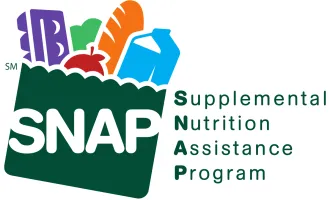
Fraudulent Fundraising
As the COVID-19 pandemic continues and many individuals seek to direct their charitable giving to emerging areas of need, Synapse has come across several potentially deceptive crowdfunding campaigns on GoFundMe.
The platform remains a valuable tool for many UCSF-related fundraising efforts, but some campaigns appear to leverage the ongoing COVID-19 pandemic and the institutional reputation of UCSF to enrich unaffiliated parties on the platform.
In one such instance, an unverified user account identifying itself as the UCSF Medical Center was seeking $250,000 for a “COVID-19 Relief Fund,” the campaign page complete with low-resolution images of overflow tents outside of the Parnassus campus and stock images of UCSF scientists and test tubes.
Associate director of UCSF community fundraising Karolina Zatz confirmed to Synapse that the campaign’s legitimacy was questionable, and disclosed that the office is currently auditing UCSF-related GoFundMe campaigns.
The page has since been deleted during Synapses’s communication with GoFundMe Communications representative Jenny Perillo, who touted the platform’s “multiple layers of protection in place to ensure the safety and security of all donors and campaign organizers.”
Despite these measures, a simple similarity search using text from the deleted campaign’s brief description reveals dozens of ongoing or recently removed campaigns with similarly dubious credentials, suggesting a larger network of coordinated fraud.
GoFundMe boasts in their site description that fraudulent campaigns make up “less than one tenth of one percent of all campaigns,” but the data behind this metric is unclear.
The platform has been marred by high-profile cases of fraud, and CEO Rob Solomon has admitted that GoFundMe has some difficulty handling “copycat campaigns” that leverage legitimate causes and institutions in order to misdirect charitable funds.
The platform has implemented security programs that compare text and images shared across different campaigns to shut down impostors, but the persistence of deceptive networks as described undermines the effectiveness of such measures.
Despite these concerns, GoFundMe remains a critical platform for UCSF-affiliated causes. The UCSF Science Policy Group is using a campaign to raise funds for its ongoing effort to generate and donate hand sanitizer to at-risk groups.
Similarly, a team of nurses is seeking funding as they continue to distribute drinking water and hygiene supplies to homeless encampments as the inhabitants lose access to essential services.
As the pandemic continues, these and other campaigns are meeting emerging needs and providing avenues for donors to contribute to the recovery effort.
Given the importance of these legitimate efforts, potential GoFundMe donors should be aware of strategies for identifying legitimate campaigns and avoiding deceptive ones.
While GoFundMe’s account verification process helps identify some larger institutional accounts, it is uncommon for individual users to have gone through the verification process. These unverified user accounts do not necessarily reflect on the campaign’s authenticity, and often such individuals will raise funds on behalf of verified institutions.
In such cases, the funds go directly to the sponsored institution.
In other cases prospective donors should confirm key features of legitimate campaigns before contributing. Such campaigns should have a clear and itemized purpose for the raised funds, a tangible endpoint to be reached or product to be generated, and a clear recipient of the generated funds or product.
Campaign description and photos should be unique and clearly related to the effort described. Promotion of the page by affiliated individuals and institutions on external social media accounts is common and is a reliable metric for evaluating authenticity.
Critically, the “Updates” feed on each page provides a valuable avenue for organizers to share progress, and legitimate campaigns with significant contributions will generally have detailed feedback in this section.
While some student and employee-organized campaigns remain on GoFundMe, institutional efforts have largely moved to the internally managed Together at UCSF crowdfunding platform.
Options to fundraise for UCSF affiliates on GoFundMe “are outdated and limited,” Zatz told Synapse, and the Together platform allows for more direct and trustworthy crowdfunding with similar functionality.
The UCSF-run site provides a compelling alternative to GoFundMe for potential donors and campaign organizers.



